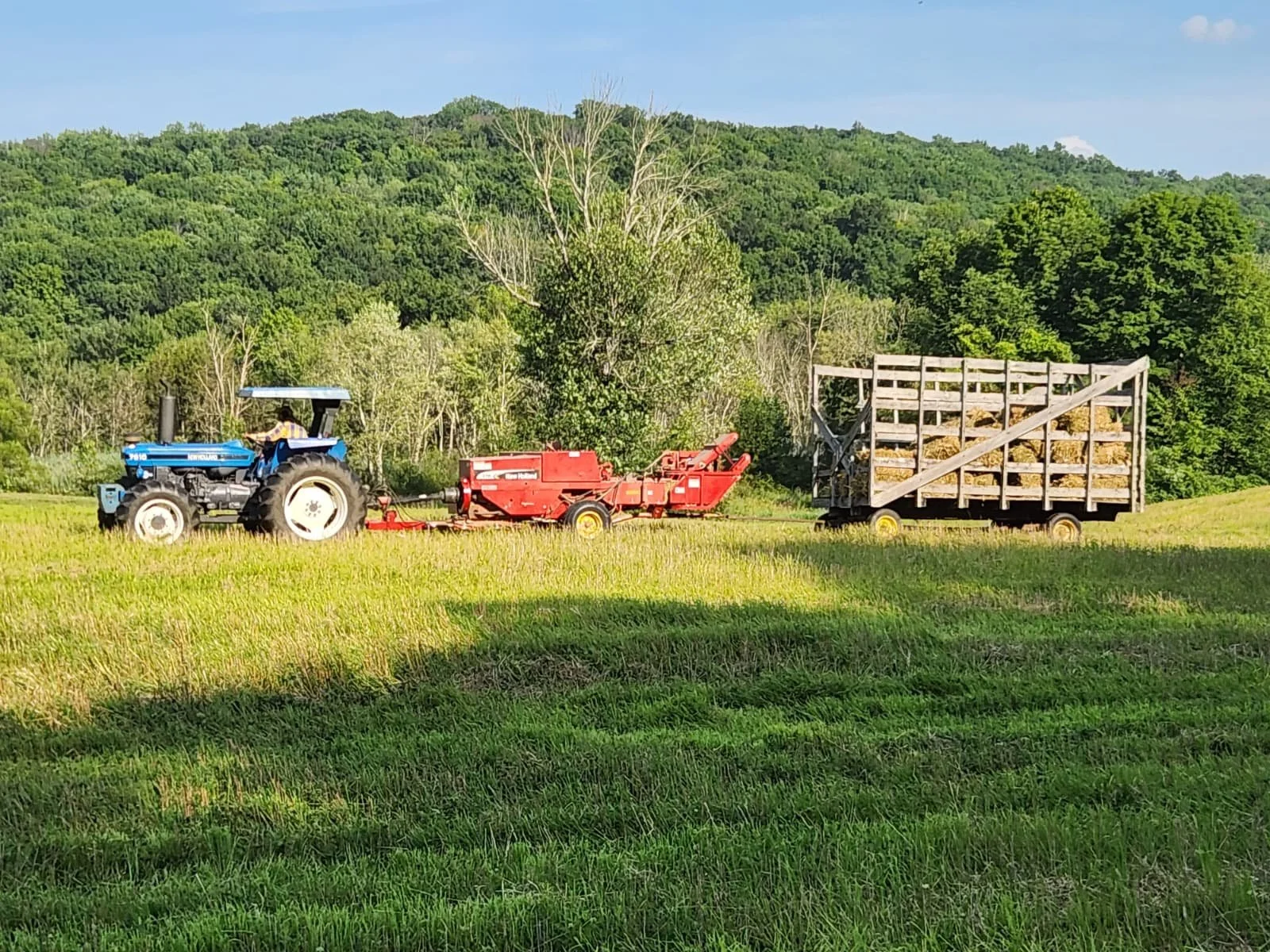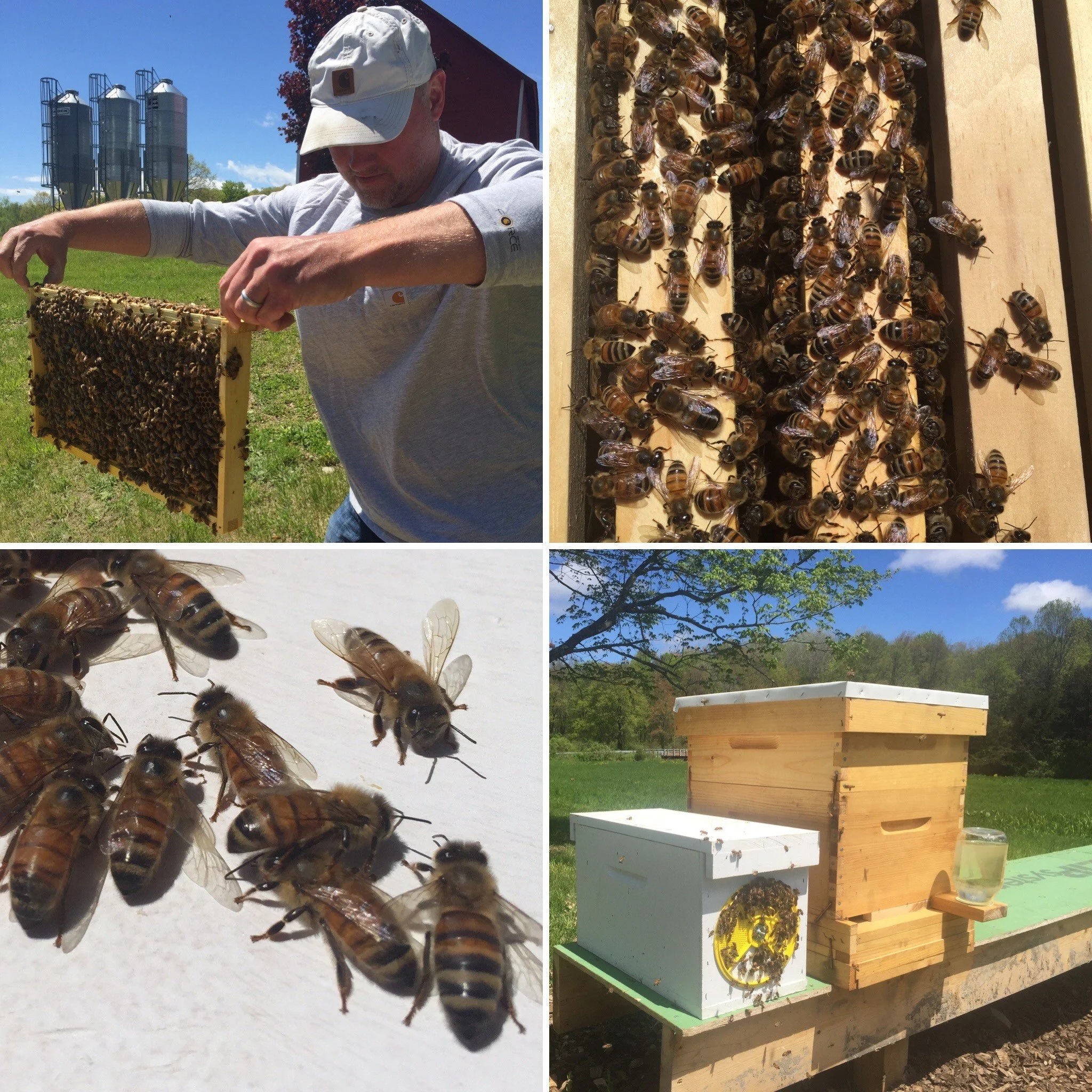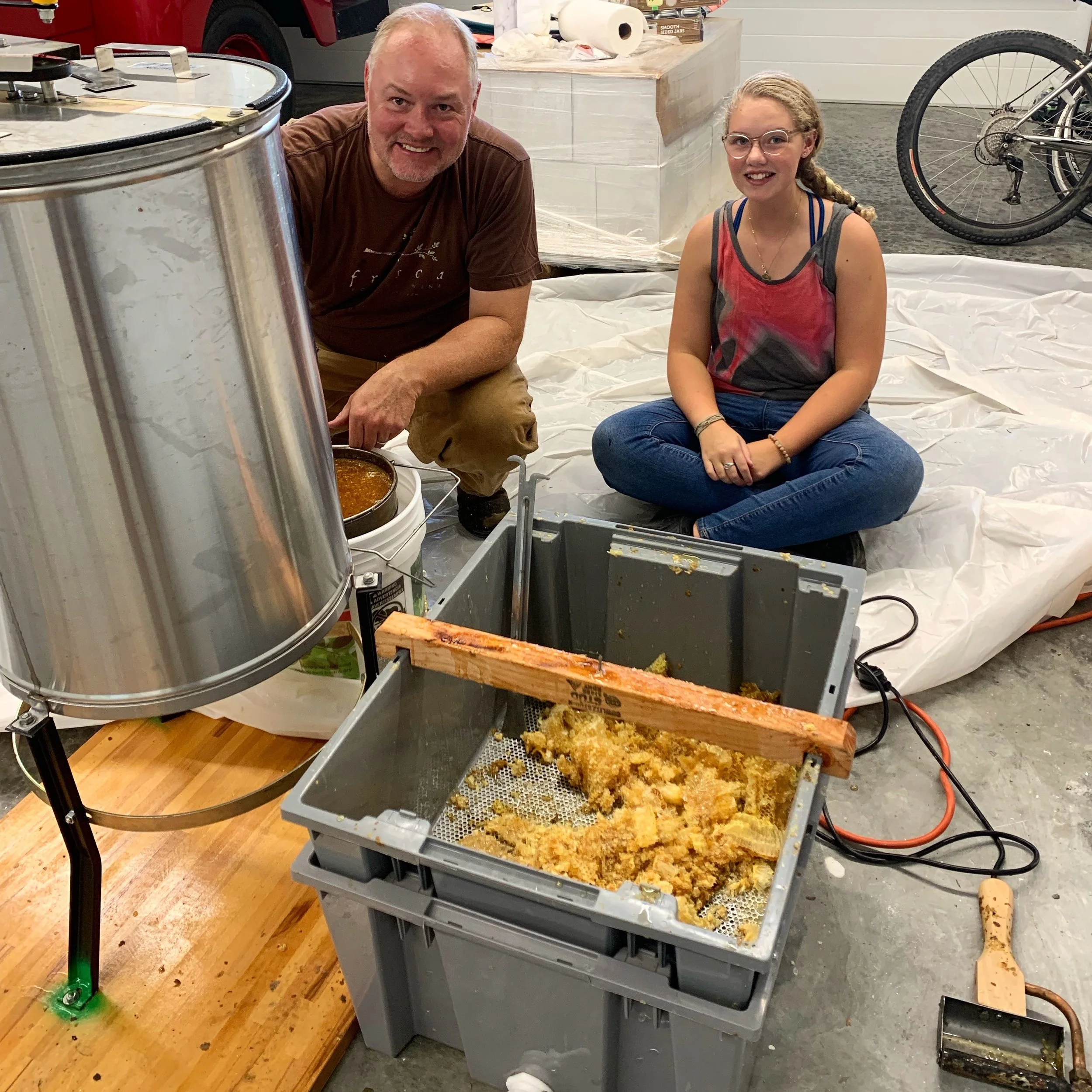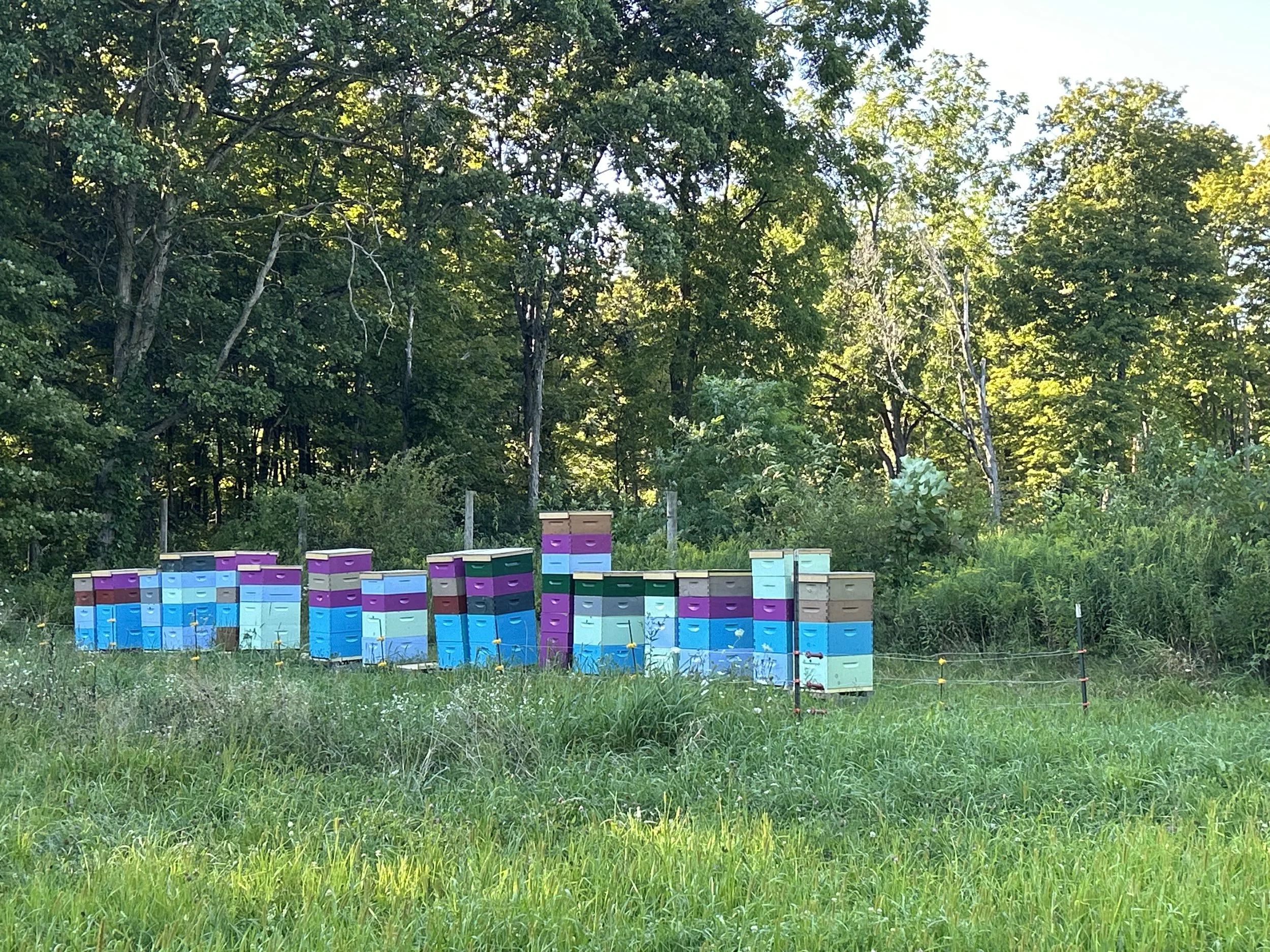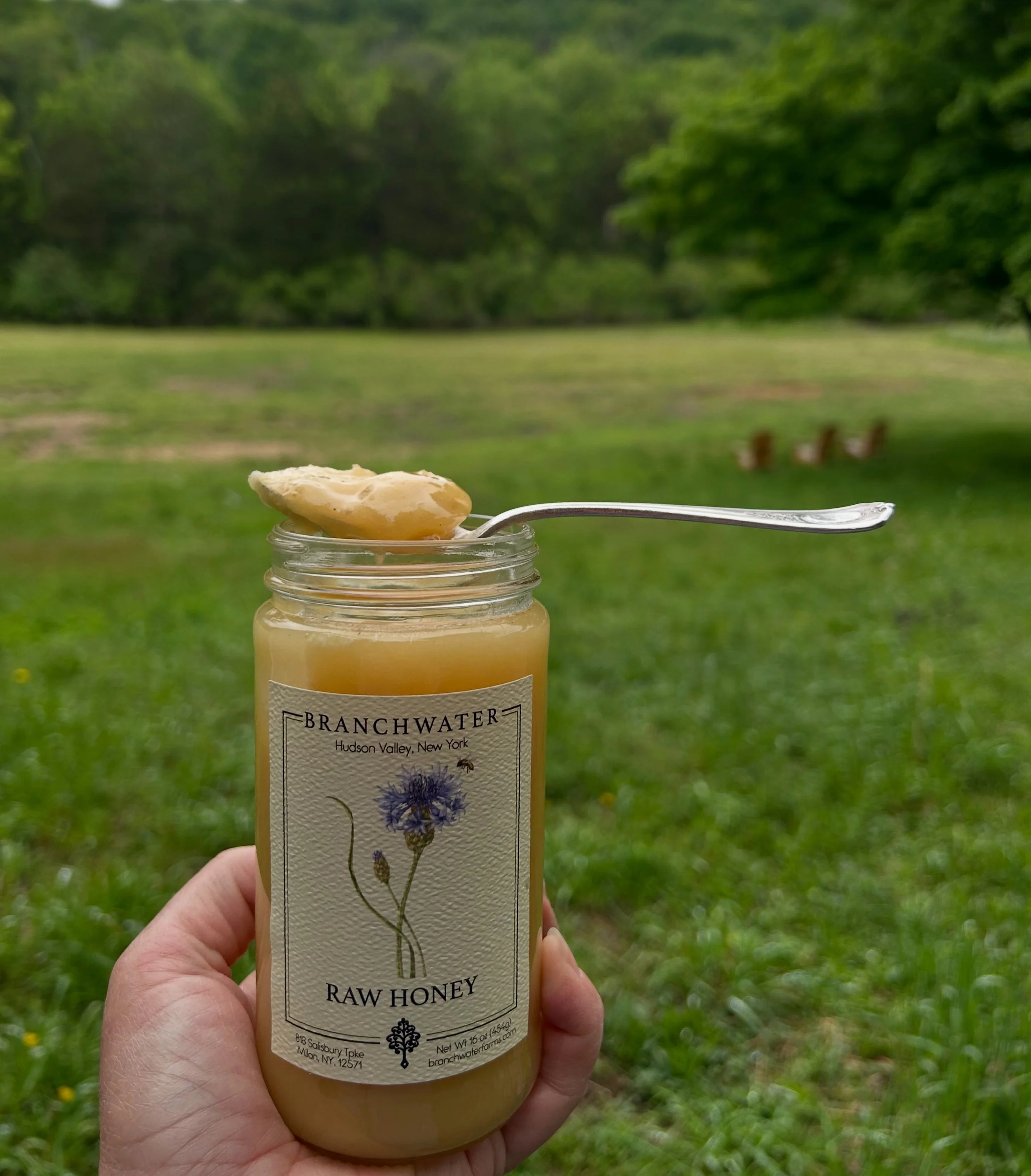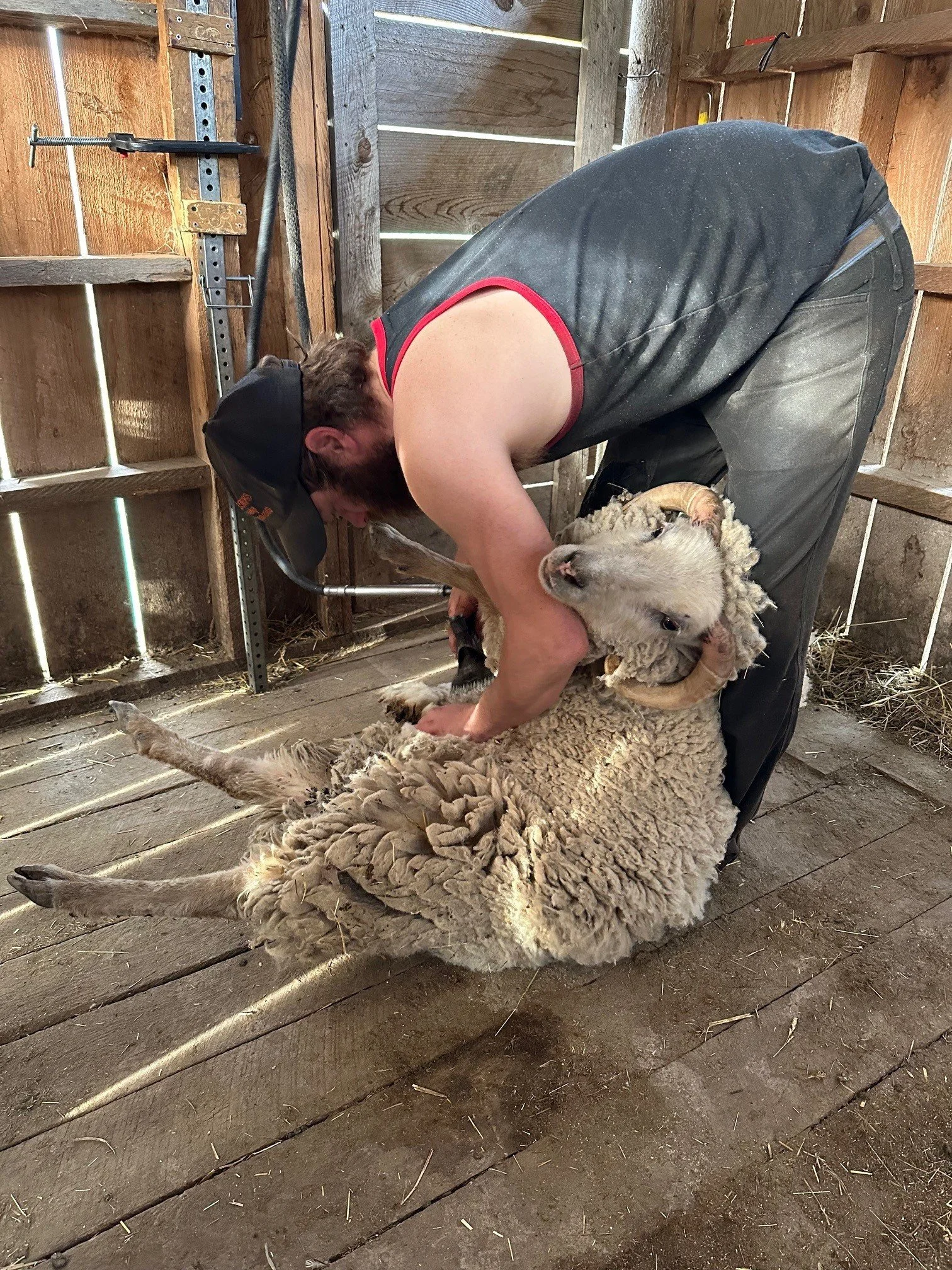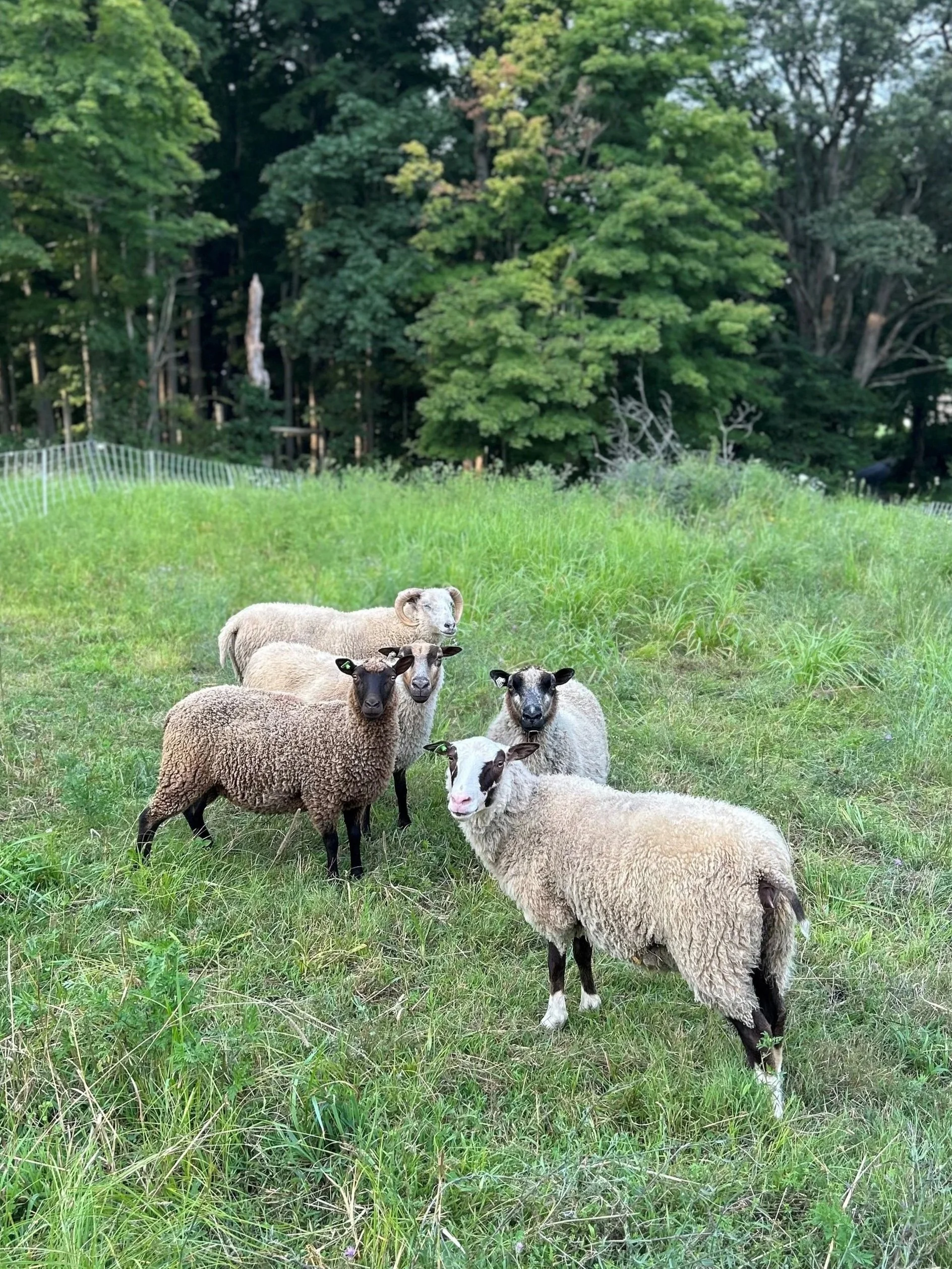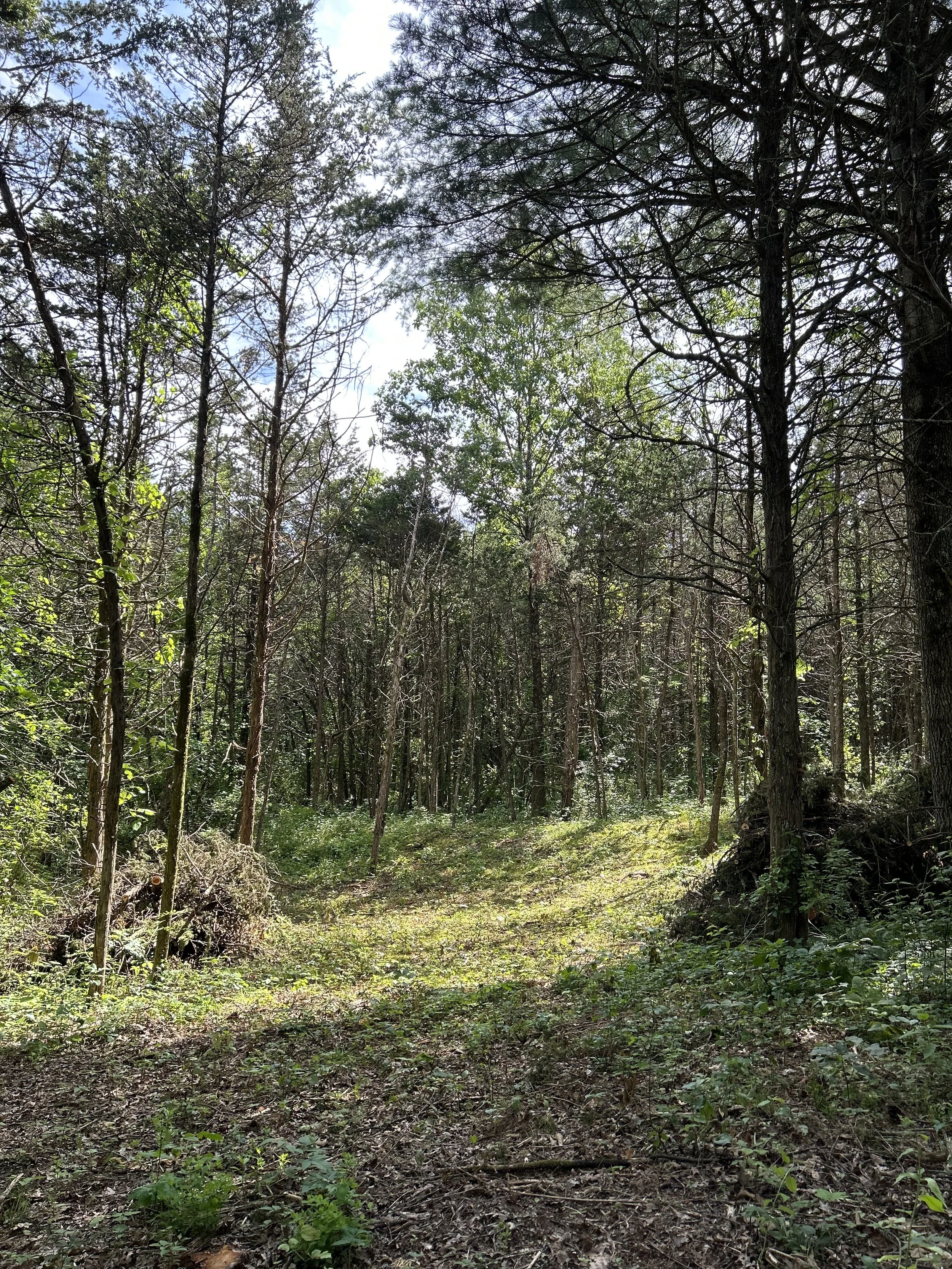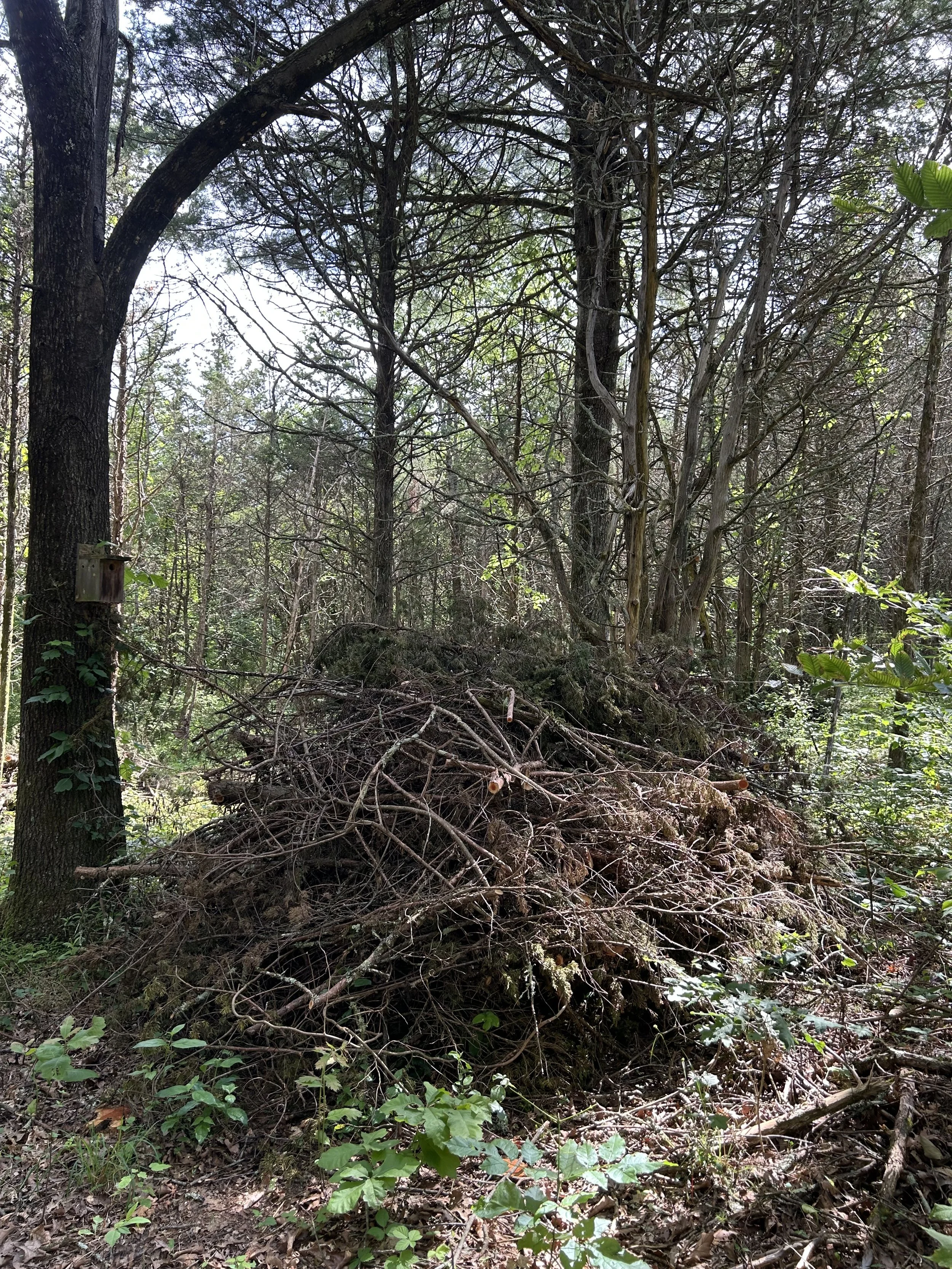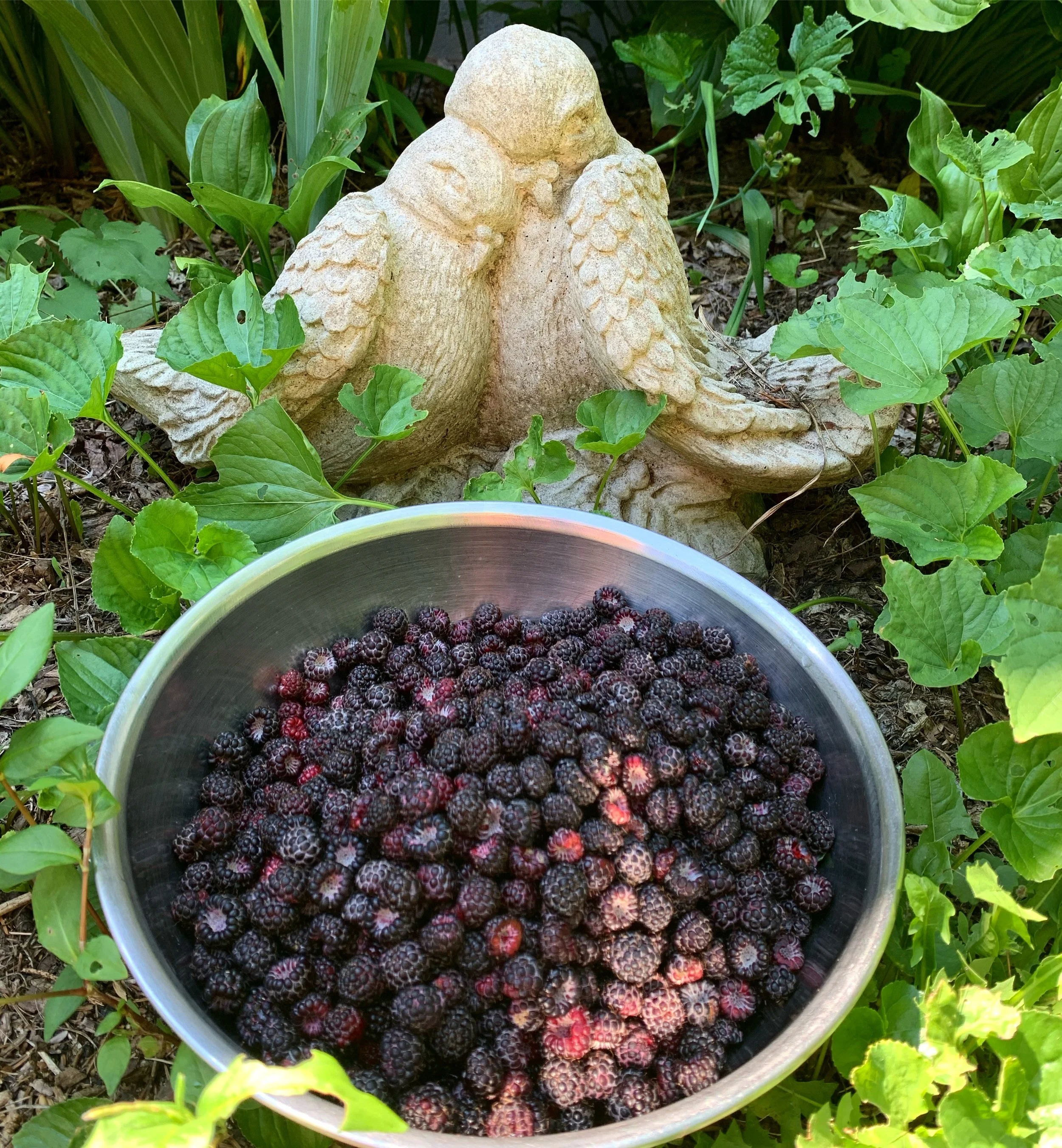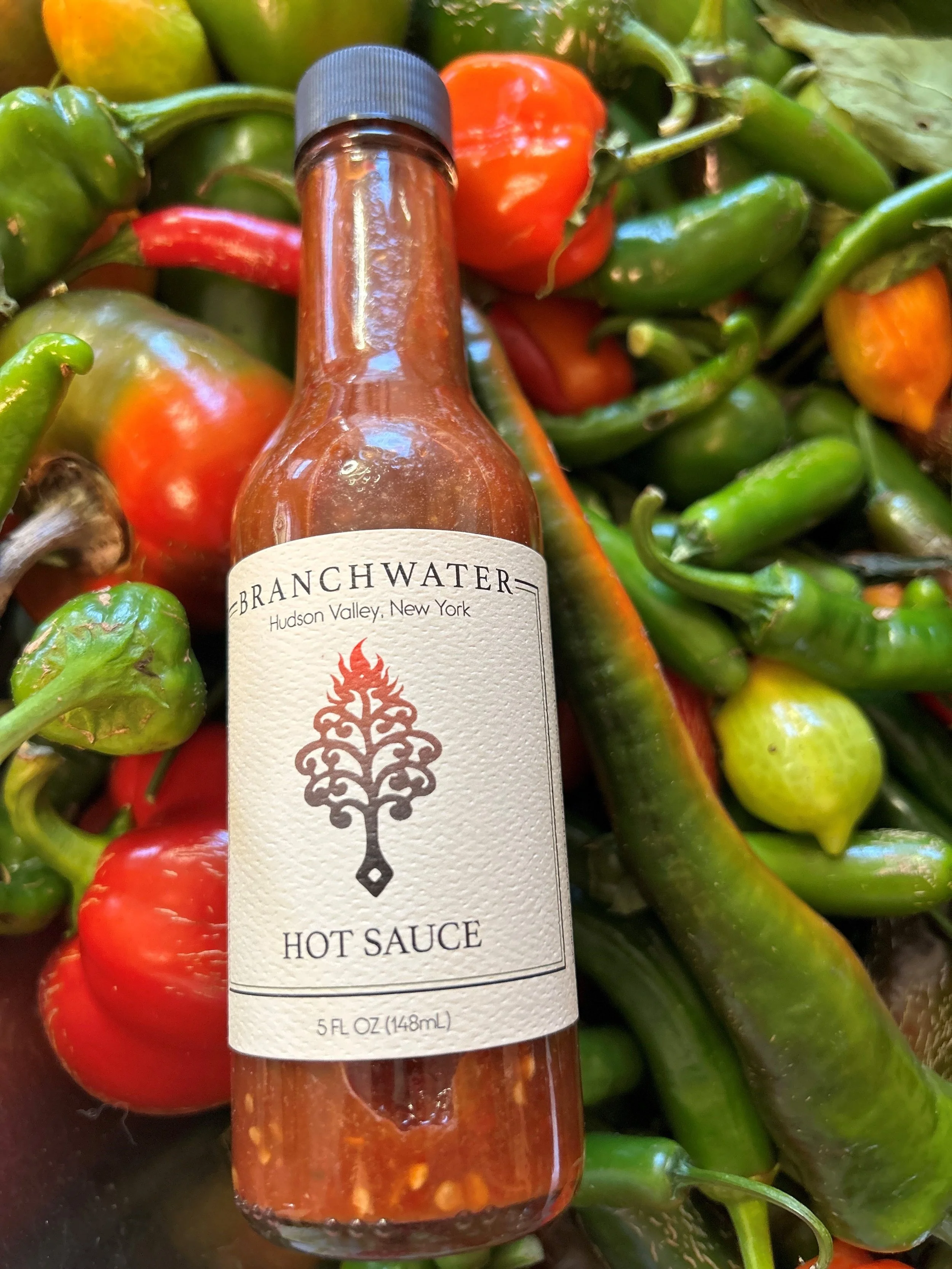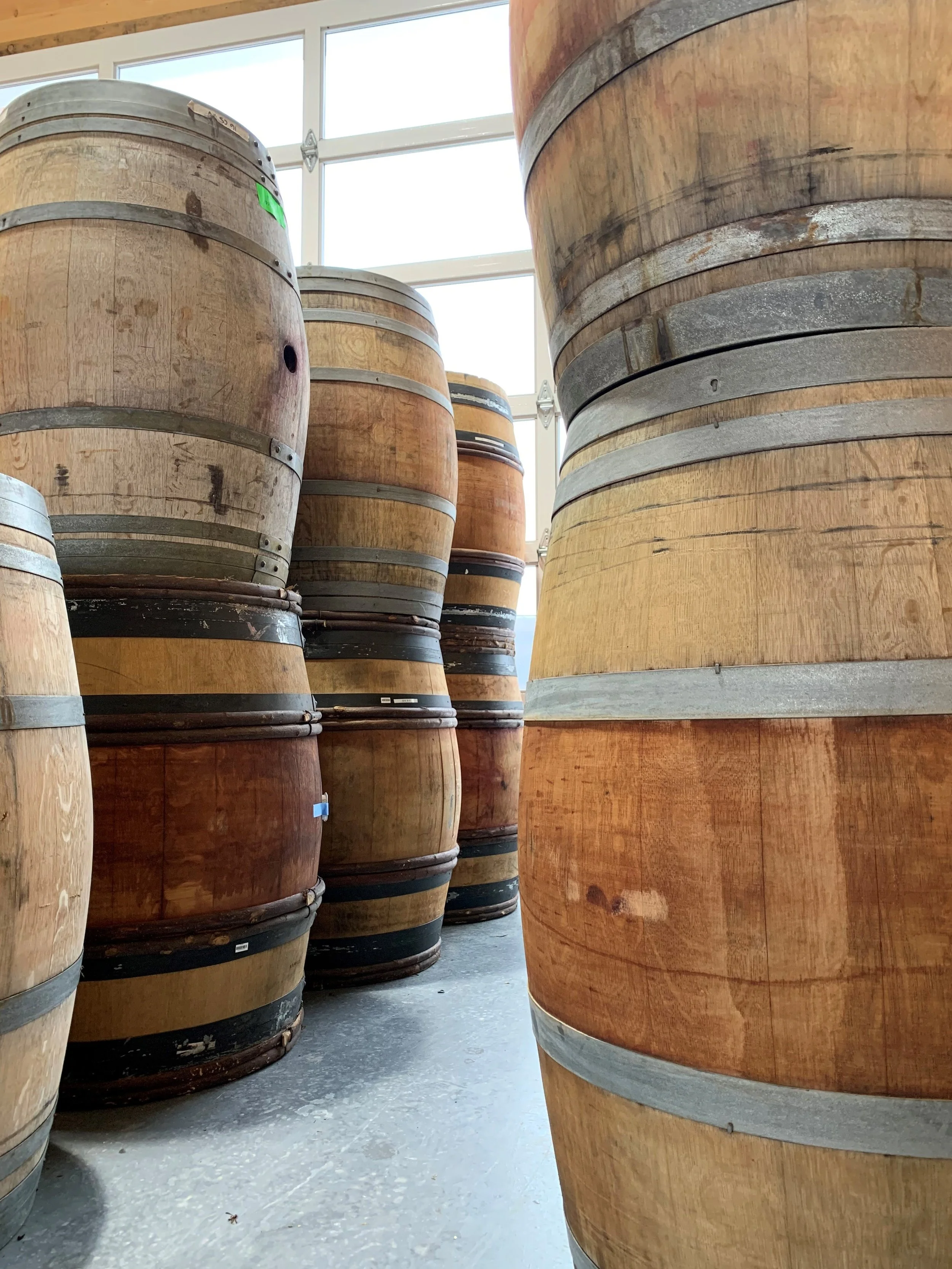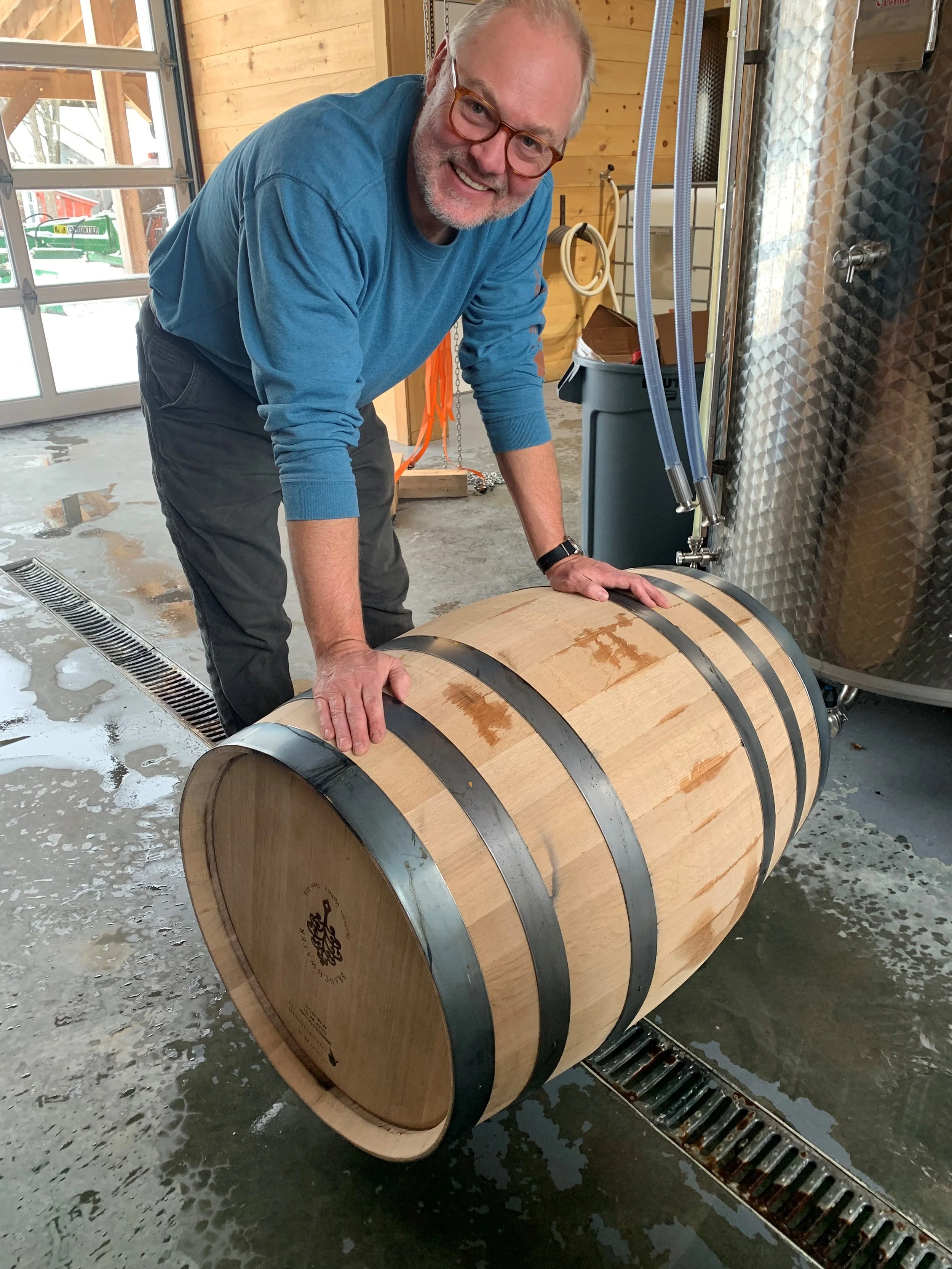Harvest
Summer 2025 - edition 9
It’s interesting how farming can completely alter your preferences and associations with certain seasons. Summer, once beloved, becomes something you almost fear, and winter’s return something you actually welcome. Summer used to be the season you associated with vacations, travel, reading books, taking naps, seeing friends and family, and eating lobster rolls and ice cream cones by the sea. Summer is now the season that shines an indifferent light in your eyes earlier in the morning and demands your attention until the last ray of light falls later in the day. In between, you navigate sunburn, mosquitoes, ticks, biting flies, poison ivy, chafing and heat stroke, all while trying to keep the other living things on your farm alive and thriving. Ahhhh summer, you sultry heartbreaker, you!
Summer on our farm also happens to coincide with several harvests and tensions can run high alongside the rising temperatures outside. In the fields, a year’s work rides on the weeks leading up to our grain harvest. And, from the moment our chicks and ducklings go from the brooder onto grass with the warmer temps, we are tasked with ensuring their safety—from predation and from extreme weather.
Sorry to put a damper on many people’s favorite season, but we are officially winter converts! Since we’re in the thick of summer, we thought we would walk you through some of the harvests here at Branchwater, most—although not all—of which occur in the summer months. So, grab a bowl of delicious seasonal fruit (ok, summer wins on this one), find a nice shady spot and join us as we travel from field to forest.
In the field
July = time to harvest small grains. The challenges for us are the weather and the equipment. As we have written about in previous newsletters that focus on farming, the Hudson Valley is becoming increasingly wet and humid in July. This makes it hard to harvest the grain. In 2021, we lost the entire crop to rain and humidity. The grain heads germinated in the fields, and all we could do was mow them down. 2024 was also an anomaly, but in that year we had very hot, full-sun days in mid-May which pushed the ripening forward. That was the only year we harvested in June.
Undoubtedly, the climate is changing, and it’s becoming more erratic. Kevin remembers a saying from his grandparent’s farm in Iowa: “knee high by the fourth of July.” It’s an olde adage (see what we did there?), that gauged the progress of corn crops in the Midwest. If the stalks were knee high in early July, it meant that the corn was on track for a good yield. Hybridization and climate change renders this saying obsolete, however, as corn is now over five or six feet in early July.
We have three 10-ton grain bins behind the barn for grain storage. We installed these years before we had the distillery up and running, because we were growing grain throughout the funding process and renovation. The bins line up along the eastern edge of the barn, and we installed a flex auger underneath the bins which move the grain to the grist house. Another flex auger moves the milled grist from the grist house to the grist case in the distillery. And another flex auger moves the grist into the mash tun when we cook the mash.
In order to store wheat and rye over the winter and for long-term storage, we need the moisture of the kernels to be at 12% or lower. And this is a problem with increasingly wetter Julys. Historically, the Hudson Valley was a breadbasket for the colonial states, supplying wheat to New York City and exporting to the Caribbean. Soil nutrient depletion in the region and the opening of the Erie Canal in 1825 led to the collapse of the regional small grain economy in the 1830s-1850s. The Erie Canal drastically lowered the transportation costs of Midwestern grain to the East Coast, and the less rocky soils in the Midwest made farming far easier than in the Hudson Valley. After the collapse of the wheat economy in the valley, the region pivoted to dairy farming. There were hundreds of dairy farms in our county one hundred years ago; as of 2023, only 12 dairy farms remain in operation in Dutchess County.
But in recent decades, there has been a rising demand for artisanal baked goods and craft beverages, which has brought back small grain production to the Hudson Valley. It has also brought back local mills. There were four stone grist mills in the Town of Milan in the 1800s, including one located at the edge of our farm on Salisbury Turnpike and Field Road. When the roller mill was invented in the 1870s, all of this changed. The roller mill could separate the bran and germ from the white endosperm (the starch milled for flour). The germ caused flour to become rancid over time, so without it, flour could be stored indefinitely, which meant that mills were no longer a necessity in every town. This caused consolidation in milling with a few large companies controlling commodity flour production across the US.
Whole grains, however, have more flavor and nutrients, and this is what is inspiring bakers, brewers and distillers today. Close to us, in Clinton Corners, is Don Lewis’ Wild Hive Farm and the Wild Hive Community Grain Project, which is devoted to the production and milling of nutrient dense, high-quality flours. Don started as a commercial beekeeper in 1982, and he added baked goods to his program in order to sell more honey. This led him to discover the deficits of commodity flour. He taught himself about the benefits of stone milling and then set up his own mill and a network of organic and regenerative farmers in the Hudson Valley and Finger Lakes regions to source heirloom and heritage grains for flour. In addition to milling all-purpose flour, pastry flour and whole wheat flour, Wild Hive mills flour from rouge de Bordeaux wheat, einkorn, emmer and spelt.
More recently this spring, Brooklyn Granary & Mill opened in Gowanus to supply bakers in New York City with stone-ground, whole grain flours sourced from farms in the Hudson Valley and nearby states. Brooklyn Granary & Mill was founded by husband and wife Patrick Shaw-Kitch and Laura Huss. Patrick started baking in Seattle at Columbia City Bakery before moving to New York to work at Bien Cuit. Then he started working at Blue Hill at Stone Barns where he became the head baker for five years. Brooklyn Granary & Mill not only provides locally milled flour to restaurants and bakers, it also has its own bakery storefront with everything from tarts and custard buns to einkorn bread and baguettes.
Kevin was not happy when an impromptu photo shoot with our friend Leslie Hill led to Robin tromping through the rye field!
But back to the harvest. Conventional farmers spray Glyphosate on their wheat and small grains prior to harvest. This kills the weeds and also aids in drying out the grain evenly. Since we farm organically, this is not an option for us, and we must contend with the weed pressure and let the grain dry naturally in the field. We plant winter crops in September and October to give the wheat (hard red) and rye a jump start on the weeds which come up in the spring. We plant heritage varieties of wheat, which grow much taller than hybridized, modern wheat meant to grow in conjunction with chemical inputs and herbicides.
So, July is a waiting game as we watch the weather forecast for pockets of dry days and test the grain for dryness. The changing weather means that we can no longer leave the grain in the fields to dry completely before the weed pressure is too high and the risk of lodging (when the straw can no longer support the weight of the grain head and falls over) is too great. So, we try to harvest when the moisture is down to below 20% humidity, ideally 16-17%. We then clean the grain and move it to the 10-ton grain bins behind the barn, where we turn on fans to dry the grain down to 12%. If the grain remains above 12.5% humidity, it will mold in storage, so drying it out is critical.
The second challenge is equipment. Most of the harvesting equipment is only used once per year, so everything must be tested and serviced before harvesting. Kevin didn’t do this in 2024, and when he went to clean the grain, the motor on the auger was kaput. Thank goodness for farmer friends, as we were able to borrow an auger from Stuart Farr at Hudson Valley Hops and Grains (Stuart is one of the farmers who supplies grain to both Wild Hive Farm and Brooklyn Granary & Mill). A new motor was installed a week before the harvest this year.
Our biggest equipment challenge is not having a combine. Combines are expensive pieces of equipment, and we’ve had to hire out the harvest work to others. Ken Migliorelli has been harvesting our grains for the last four years, and we are grateful for this. But Ken has his own crops to harvest, so those few, dry July days become an even narrower window when we need to contract out the combining. In the last week, however, we’ve been eyeing a 1983 International 1420 Axial Flow Combine with 3000 hours on it. So maybe next year, we’ll be able to harvest the grains ourselves.
After the grain is harvested, we have our friend Marty Clarke make straw bales for us to use as animal bedding. A harvest from a harvest.
In the Apiary
In 2017, Robin signed us up for a beekeeping course in New Paltz, and upon completion we jumped in hip-deep with three hives of Italian honeybees. That first season was a honeymoon (see what we did there again?) without issue, and we fell in love with the gentle hum and batting of small wings that was added to the landscape. The bees made it through the winter, and we had some more luck in the second year, by catching a swarm and splitting a hive. We opted not to harvest any honey the first two years as we were unsure of what the bees needed to survive our winters and hopefully thrive in a challenging climate.
Then we had five hives and all the problems that come with more bees. We had varroa mites and wax moth infestations. We were eager to try our hands at honey harvesting so in September of 2019 we harvested about 250 pounds of honey.
In the spring of 2020, we were able to split the two remaining hives into three and thought that we were back on track with more diligent varroa mite monitoring. The bees made it to March 2021, but then all three hives collapsed, and with other projects demanding our attention, we put away our hive tools and smokers.
Since then, we’ve really wanted to have bees back at Branchwater. With all the cover crops we grow—from clover to peas to buckwheat—the farm is a haven for foraging bees.
Robin had a chance meeting with Brian Moon of Moon’s Gold Apiary in 2023, and since last year, Brian has been keeping about 30 hives at Branchwater. The lease we receive for the land he uses is a hive’s worth of honey, and then we typically buy honey from 2 or 3 more hives from our farm. We don’t know why, but our honey has a very high sugar content, perfect for spreading on toast.
Although we loved working with bees, we just didn’t have the time or bandwidth to keep that project going. And our focus has turned more towards native bees and pollinators. A project for the winter is to build native bee hotels to install around the farm.
In the Pasture
After reading Michael Pollan’s groundbreaking book “The Omnivore’s Dilemma” well over a decade ago, we both experienced a profound shift in how we view our relationship to the food we consume. Both committed omnivores, we began to give much more thought to how the meat we eat is raised and processed. Simultaneously, we were growing increasingly troubled by the industrialized systems responsible for much of the food now produced.
While there was never a shortage of access to food from farms, farmers markets, or fish mongers while living on Long Island or Manhattan, moving to the Hudson Valley really opened our eyes to what an abundant and healthy food system could look like. And, after securing our farm in 2014, the possibility of participating in that system became an option.
As we mentioned in our last post, Robin interned at Kinderhook Farm in 2019 to get better acquainted with animal husbandry practices at a reference point farm for the region. Robin participated in several chicken and duck (and even a goose) processing days at Kinderhook, and she helped at other farms in the area as well. She discovered that her love of biology translates beautifully into a hidden talent at the evisceration table.
We carry out on-farm slaughters for both chickens and ducks here – usually one batch of each a year. New York State has a 1,000-bird limit exemption per calendar year which allows poultry growers to slaughter and process birds raised on their premises and sell directly to consumers. We like having control over this very critical stage, as we want to ensure that the birds we took so much care in raising are given the respect they deserve in this final act. We borrow the equipment needed for processing from other farms, including a stun gun as per processing standards for Certified Humane® Standards for Chickens. Although we are not certified, we follow the guidelines outlined by Humane Farm Animal Care (HFAC) welfare standards.
Processing days are some of the most special days on our farm. They are also some of the most difficult days on our farm. Raising animals for meat requires a healthy level of detachment but also humility and respect. We are grateful for the opportunity to work with other species, and we genuinely enjoy the window it affords us into the unique behaviors of other animals. Yes, we sometimes feel at odds about the fact that we simultaneously love animals and eat them. If you raise them for food, you may have felt similarly conflicted.
If you have never participated in an event that involves harvesting food for yourself, your family or members of your community – whether canning vegetables, making sausage from a locally raised pig, storing garlic or slaughtering chickens, we highly recommend it. For us, the day is about coming together, showcasing how farms are a real and vital source of food for their communities, and how a community can show up to support a farm. We rely on the willingness and generosity of friends and fellow farmers to help with the work on these days. Friends like Mimi and Richard Beaven who came the day before our very first on-farm slaughter to walk us through every step so that the day of would run smoothly, and who have participated in every processing day since. Friends like Grace Cannan who is a total professional when it comes to the unenviable task of dispatching each bird. Friends like customers we’ve met through our farm store who step up to volunteer because they just want a better understanding of the process.
Processing days are also about tradition—honoring ancient ones, and adding new, modern layers of meaning to them. They are about becoming hyper focused on a specific task for a few hours, putting cell phones aside and working with our hands, relying on a more primal part of our brains. It is a moment to honor the sacrifice of a life for life, a timeless cycle that requires reverence and reflection. It is an age-old art of participating in a communal act. And when the hard work is done, we join each other in another communal act—that of sitting around a table and sharing a meal. No part of the animal is wasted—the more valued organ meats are packaged up for sale, gizzards are cleaned and stored for Dante treats, as are the heads and feet. The intestines, feathers and blood are composted.
Our book club’s summer read has been “Braiding Sweetgrass” by Robin Wall Kimmerer, a botanist and member of the Citizen Potawatomi Nation. If you haven’t read it, we can’t recommend it highly enough. One of the passages in the chapter entitled “The Gift of Strawberries” really resonates within the context of harvest:
“In the old times, when people’s lives were so directly tied to the land, it was easy to know the world as gift. When fall came, the skies would darken with flocks of geese, honking “Here we are.” It reminds the people of the Creation story, when the geese came to save Skywoman. The people are hungry, winter is coming, and the geese fill the marshes with food. It is a gift and the people receive it with thanksgiving, love, and respect.
But when the food does not come from a flock in the sky, when you don’t feel the warm feathers cool in your hand and know that a life has been given for yours, when there is no gratitude in return – that food may not satisfy. It may leave the spirit hungry while the belly is full. Something is broken when the food comes on a Styrofoam tray wrapped in slippery plastic, a carcass of a being whose only chance at life was a cramped cage. That is not a gift of life; it is a theft.”
Another type of harvest we carry out from the pasture is the wool we get from our sheep. This has been our first year working with fiber animals and we expect this journey to have its own unique learning curve. The sheep were sheared back in April by Aaron Loux and he was very impressed with their fleeces. Gracie and Havana are both registered with the Fine Fleece Shetland Sheep Association, and Pipkin and Dandelion are expected to qualify when they are 22 months and eligible for a fleece sample submission. It’s been so much fun witnessing “the return of the wool” after their shearing. Many factors influence the quality of a fleece, and pasture quality is right there at the top. Robin is attending all of the educational pasture walks, trainings and workshops she can fit in between on-farm responsibilities, and she has a stack of sheep and pasture books just waiting for summer’s manic pace to subside a bit! For now, she is very grateful that all the sheep are thriving and settling in nicely to their new home.
In the forest
This spring, we formally merged a 20-acre parcel into the main farm, making the farm roughly 100 acres. Only about 25 acres are fields for pasture and grains; the rest of the land is wetlands, creeks and forests. In the late 1700s to the mid-1800s, all the land in this area was denuded of trees. Forests were cleared for building materials and feeding charcoal kilns. Charcoal was a primary industrial fuel at that time, used especially for iron smelting, but also for blacksmithing and metal manufacturing. As grain production declined, farmers turned to dairy cows and orchards. As the dairies failed, much of the land naturally reforested.
An old aerial photo of our farm from 1936 shows about 4 acres of orchards west of the house and barn, and then mostly open space, except for the 14 acres of steep hills west of Milan Hollow Road which shows new tree growth. Another aerial photo from 1955 shows that hillside completely reforested and some boundary trees growing. This photo was taken when the farm was a dairy operation. An aerial photo from 1970 shows the entire eastern side of the farm reforested. By then, the cows were gone, and only the main fields were used for feed corn and hay.
An aerial view of the farm from the 1940s
One of the more opportunistic trees first to come back were Eastern Red Cedars. Between the Little Wappinger Creek, which bisects the farm, and the old stone wall boundary to the east is nearly 25 acres of cedars. These fast-growing trees quickly reforested the old dairy cattle grazing field. But deciduous trees, more slowly growing, are also there. When Mimi Casteel walked the farm with us in 2019, she told us that the cedars were not really meant to be there. The forest should be full of maples, oaks, shagbark hickory, elm, ash and tulip trees.
All those trees are growing in the forests around the farm, including in the cedar forest. At first, because the cedars grow so quickly, they block the sun from the deciduous trees which further stunts the broad leaf trees from growing. But as cedars fall, more sunlight can reach the hard woods, and they begin to take over. Now, in our cedar forest, the deciduous trees are intermittently poking above the cedar canopy. This shades the cedars, and they are starting to die off.
We’ve identified this forest as one that needs to be managed, and we started this project in 2024. The plan is to cut out all the cedars but maintain the deciduous trees. Since the deciduous trees are spaced out throughout the forest, we would keep these for shade and then seed the forest floor to pasture for sheep.
To help us, we’ve partnered with Rob Davis from Romancing the Woods. Rob is a custom builder of outdoor rustic furniture and woodland garden structures. He specializes in locally harvested Red Cedar trees and branches from the Hudson Valley and Catskill Mountain region. We met on one of the many farmer listservs we subscribe to, and it has turned into a mutually beneficial relationship. Rob gets the local Red Cedar he needs, and we get a small renumeration for the wood, but more importantly, we are starting the process of restoring the forest to trees meant to be there with some added pasture for our ruminants.
Kevin’s brother Paul also spent a week here this spring cutting down some of the Cedars that will be used as fence posts for livestock paddocks. When Paul visits, projects always get checked off our to-do lists and that’s the best kind of family visit when you’re full-time farmers!
Part of the reason why we merged our two contiguous parcels was to prohibit development on the 20-acre parcel, but the other reason was to create a parcel big enough to qualify for New York’s Forest Management Plan, under the 480a Forest Tax Law. This is a long-term project, but one we feel is important for our farm that consists mostly of forests.
Wild forest offerings
We have become much more attuned to the seasons here and, as a result, we get very excited when wild offerings return each year. With childlike wonder, we harvest wild chives, ramps, morels, nettles, golden oyster mushrooms, wild raspberries and black caps. These are true gifts from Mother Nature, and we try to honor that by taking only what we need and by sharing them with others. If you have visited the farm store during ramp season, you may have been handed a small bundle of pungent joy. As expressed in “The Gift of Strawberries” chapter in “Braiding Sweetgrass,” these wild treasures are gifts, not commodities.
In the garden
This is the first year in many that we haven’t tended a garden and we are anxious to reestablish one again next year. With all of the projects we have going on and a home renovation in full swing, we didn’t have the bandwidth to plan, plant and manage a garden this year. It didn’t help that thistle had aggressively established itself in several of the beds and that a small family of groundhogs has taken up residence in the garden. Sometimes you just have to walk away and try again later.
We have really missed eating tomatoes straight off the vine and crafting meals around what we harvested in the morning. But it has given us the chance to support our favorite local farms and farmstands (shout out to Montgomery Place Orchards Wayside Stand, Hearty Roots Farm and MX Morningstar!) and with our home renovation behind us, next year we will set about undertaking a garden renovation!
Our hot sauce, which has gained quite a following, is based on a blend of hot peppers we plant each year. But every year the peppers and ratios change – to keep things spicy!
We have also discovered the joy of planting flowers after a few years of being too practical and only planting edibles. We’ll never not have flowers in our garden again! Not only do the pollinators love them, but the eye and soul deserve them.
In the Rickhouse
Rickhouses date to late 1700s Ireland. “Rick” may derive from the Irish word “righ” (king), and a rickhouse has also been called a king’s warehouse. But whatever the origin, a rickhouse is where distilleries store their barrels for aging.
We’re a small distillery, so we don’t have a separate building serving as our rickhouse. Instead, our rickhouse is the barrel room above the distillery. We store all the oak-aged whiskeys and apple brandies up there, but we also store all the clear eaux de vie (brandies) in stainless steel and glass balloons.
When one removes a spirit from the cask, it’s called harvesting the barrel, and this July we harvested three 200 liter rye whiskey barrels which had been in the rickhouse since 2021. This is our second bottling of rye whiskey, now 4 years old, and bottled at 100 proof.
We also harvested and bottled our first English Morello Cherry eau de vie this July. We purchased 5000 pounds of cherries from Fix Brothers last July which made only 500 half bottles, so there are 10 pounds of cherries in each bottle. We loved it so much, we committed to another 5000 pounds of English Morello Cherries this year. They were harvested in July by Fix Brothers, and after three weeks fermentation—and distillation twice—the 90 liters of morello cherry brandy is resting and maturing at 87.10% ABV in the rickhouse.
What We’ve Been Up To Lately
On July 19th our friends at Stissing House hosted a Farm Feast featuring spirits and farm products from Branchwater, and wines from Kevin’s import company Schatzi Wines. We are so grateful to have a partner like Stissing House and to have had the opportunity to share some of our story and a table with a great group of engaged and engaging guests.
We hosted Cherry Fest at the distillery on July 27th to launch our latest eau de vie, English Morello Cherry. We were joined by friends from Rose Hill Ferments, Klocke Estate, The Little Rye Bakehouse, Potters Table Bakery and LG Studio Pottery. You came, you sampled, you ate pie, and you supported local businesses. Thank you! Event days truly are some of the most rewarding days.
What we’ve been mixing up lately
It’s hard to improve on The Last Word, a classic Prohibition-era cocktail that is a perfect combination of sweet, sour, herbal and bitter. The cocktail calls for equal parts gin, Green Chartreuse, Maraschino Liquer and fresh lime juice. Our farm license allows us to sell New York State beer, wine, cider and spirits and our cocktails have to obey this golden rule as well so we’re constantly playing around with ingredients to get a Last Word-y concoction. We knew our cherry brandy would put a fun spin on things. While not THE Last Word, we’re pretty happy with this creation.
Yada Yada Yada (AKA: The NY Last Word)
1oz Branchwater Gin
1oz Faccia Brutto Centerbe
1oz Fresh Lime Juice
0.5oz Branchwater English Morello Cherry Brandy
0.5oz Simple Syrup
Combine with ice, shake and strain into chilled coupe.
Garnish with a Branchwater/Rose Hill collab brandied cherry
Looking ahead…
(Final) Fridays at the Farm - Fridays at the Farm is our way to showcase the spirits we make here, serving up cocktails and specialty food boards against the farm’s casual and calming backdrop. We’ll be hosting Fridays at the Farm the final Friday of every month from May through October, so mark your calendars! Next one is August 29th, followed by September 26th and October 31st. Service is 4-7pm.
North Salem Farmers Market - for friends further south, you can find us at the historic hamlet of Croton Falls in Westchester a few Saturdays this season. Our last one for the season is Sept 13th. The market runs from 9am-2pm and showcases quality foods, organic produce, flowers, and handmade goods from local farms and artisans.
Millbrook Farmers Market - we are very excited to be joining the first farmers market in Dutchess County for their 35th season! It’s held every Saturday from May 31-Oct 25 (9am-1pm) in the Franklin Ave parking lot and we’ll be joining on August 30th and September 27th.
Sip & Learn: Prohibition and Bootlegging in the Hudson Valley - Have you ever wondered what prohibition-era dramas may have played out in your own backyard? The Hudson River Maritime Museum has your answer! Come hear Kingston City Historian Taylor Bruck and Greene County Historian Jon Palmer tell the wild and remarkable story of prohibition and bootlegging in the Hudson Valley. With a special focus on Kingston, Bruck and Palmer will give a sense of the causes and nature of the illicit alcohol trade fostered by the ratification of the 21st Amendment. This fascinating talk will be accompanied by a tasting of our spirits. There will also be farm goods available for purchase, as well as full bottles if you taste something you particularly enjoy. See you there, and be ready to sip & learn! September 25th @ 5:30 PM. Tickets and information here








